Thermal printer
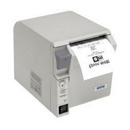
In a thermal printer, a heat-sensitive paper is heated by a print head at the points to be printed.
Advantages: simple design, no ribbon. Disadvantage: expensive paper, paper turns yellow with time.
In a thermal printing process, the desired printing result is achieved "without pressure" by generating heat at specific points instead of by mechanical impact or pressure. To print, the paper (or other media) and a thermal print head or line, which consists of an array of small heating resistors, are moved past each other. Sufficiently high heat dissipation results in a sufficiently small thermal time constant for these heating elements to be able to print a paper web with high resolution while moving continuously.
The print density is specified here both in dpi and occasionally in (DPM). Common print densities are 6, 8, 12 or 24 DPM (corresponding to 150, 200, 300 or 600 dpi), but finer ones exist. The printheads are sensitive to contamination, especially by dust containing metal, whose deposits can cause a short circuit between the thermal resistors.
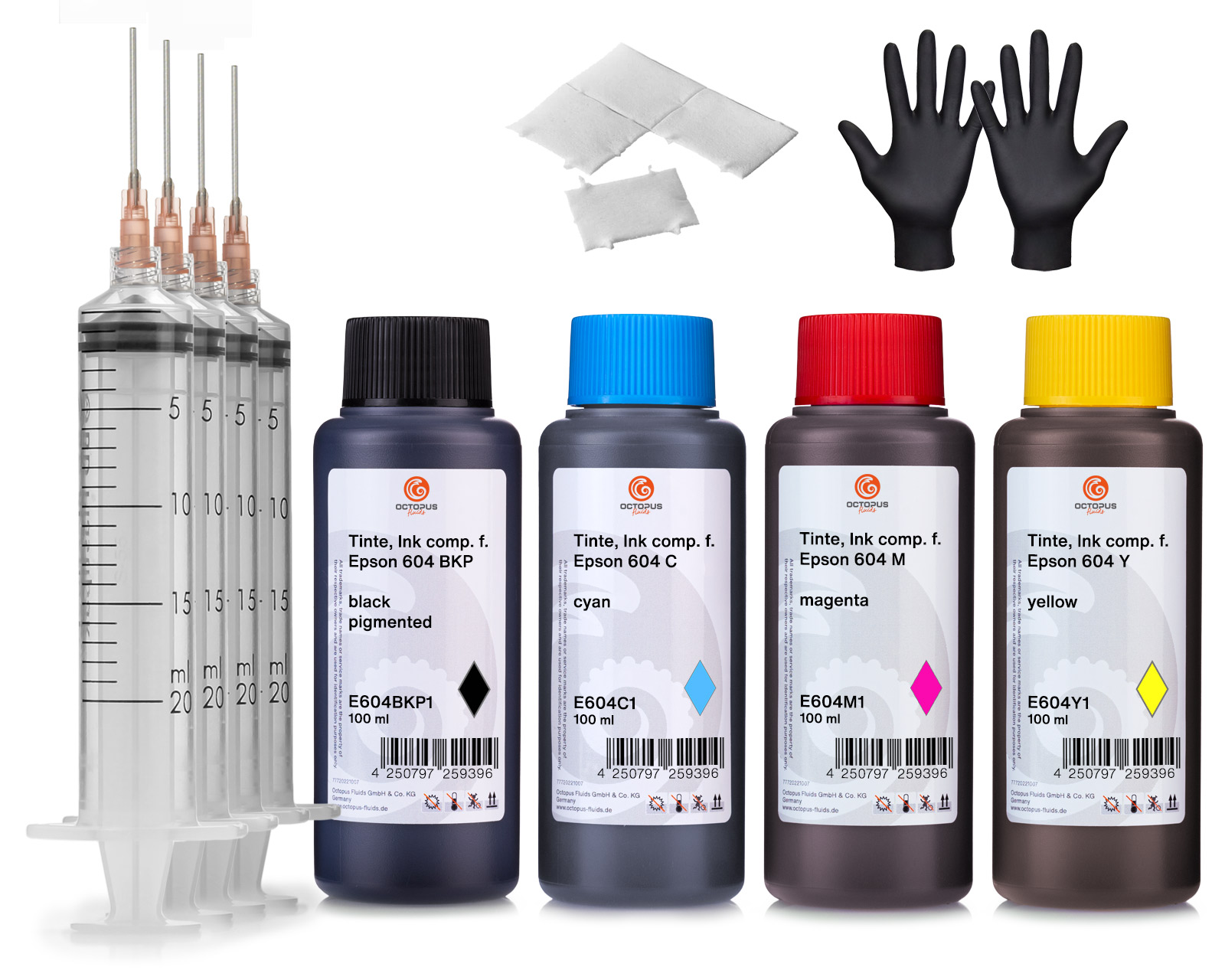 Octopus printer ink set compatible for Epson 604 ink cartridges, WorkForce 2950DWF 2930DWF
Octopus printer ink set compatible for Epson 604 ink cartridges, WorkForce 2950DWF 2930DWF
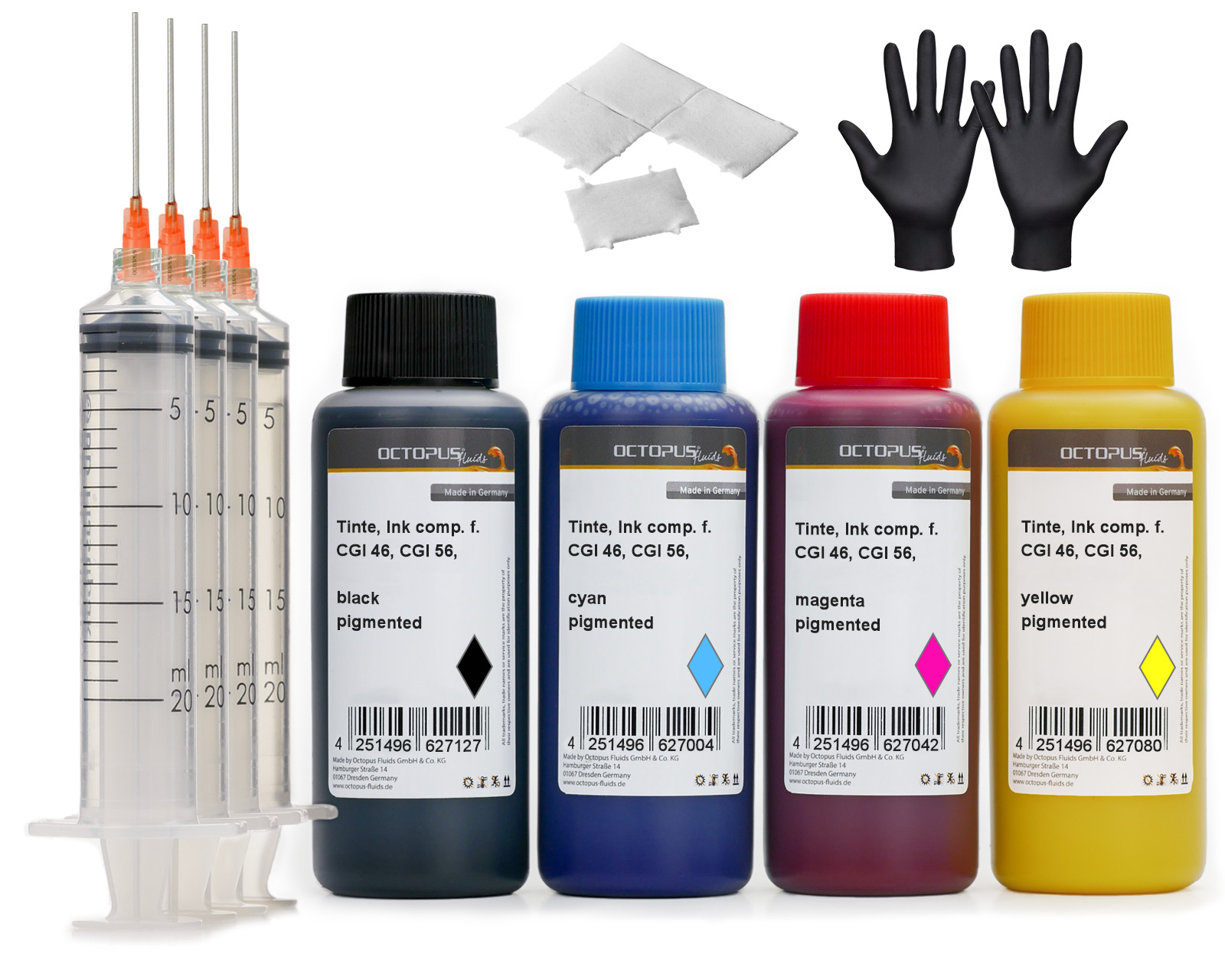 Printer Ink Set for Canon GI 46, GI 56 ink tank
Printer Ink Set for Canon GI 46, GI 56 ink tank
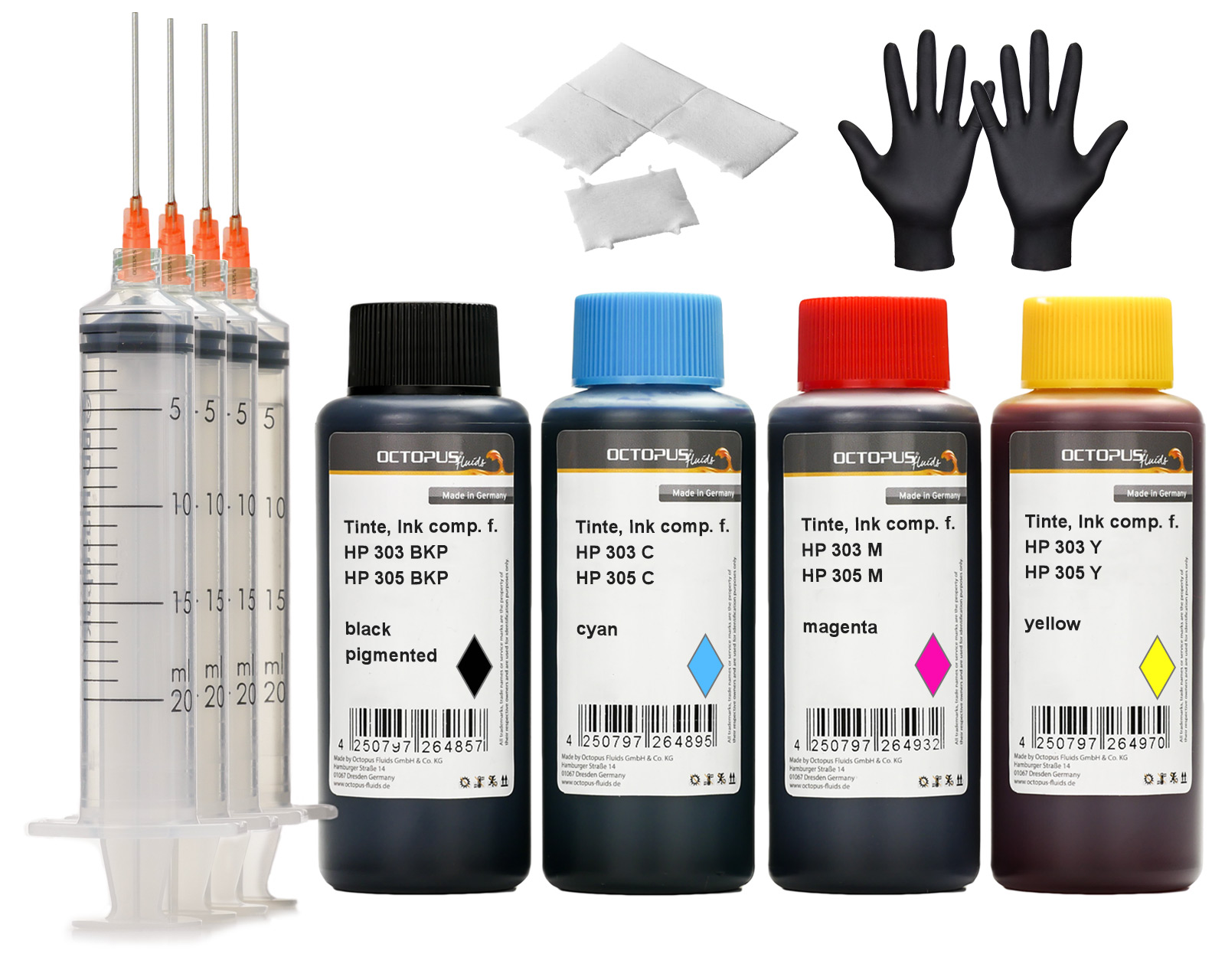 Refill ink set compatible for HP 303 and HP 305 Ink Cartridges, DeskJet, DeskJet Plus, Envy, Envy Pro
Refill ink set compatible for HP 303 and HP 305 Ink Cartridges, DeskJet, DeskJet Plus, Envy, Envy Pro
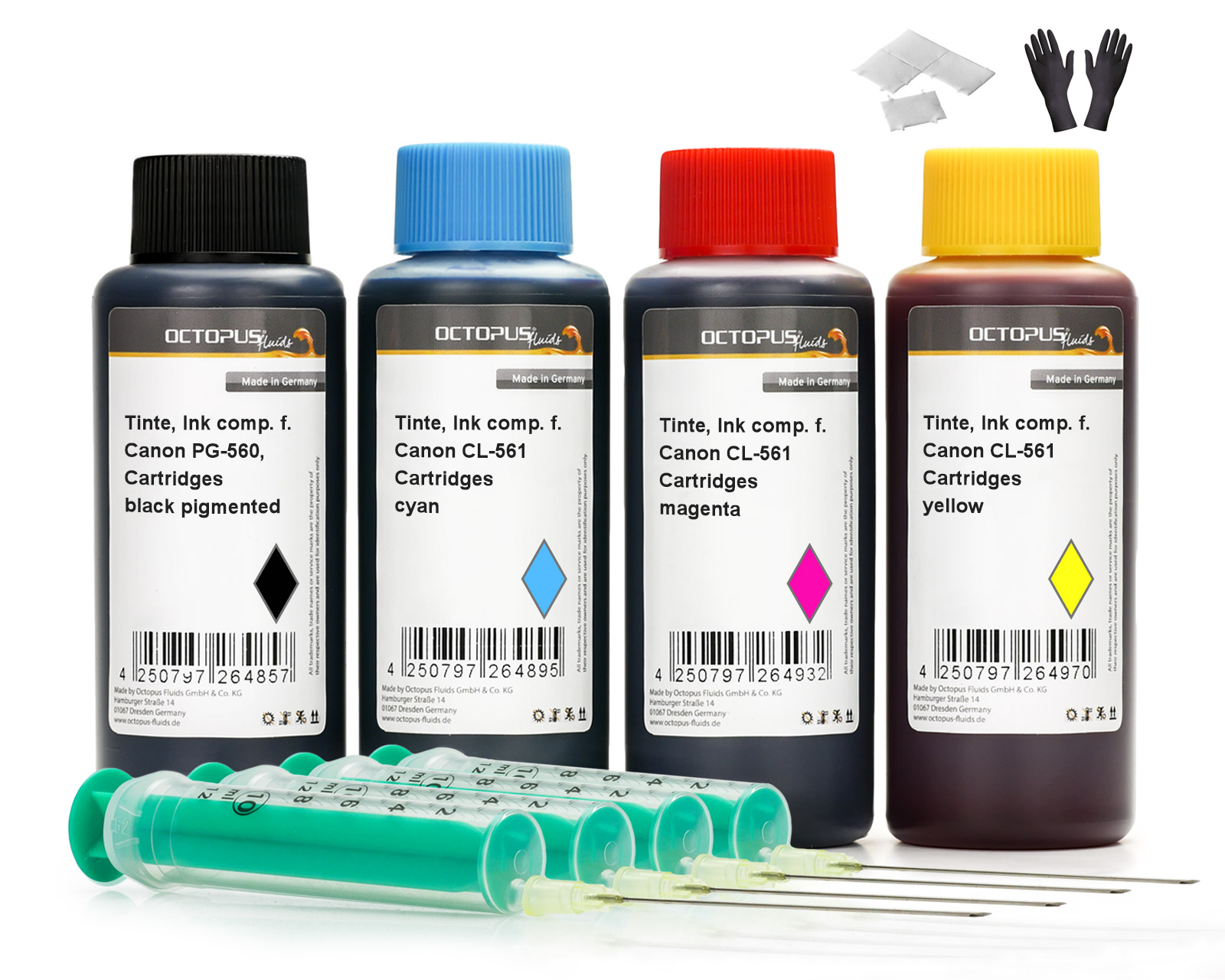 Octopus printer ink set compatible for Canon PG-560, CL-561 ink cartridges, Canon Pixma TS 5300, 7400
Octopus printer ink set compatible for Canon PG-560, CL-561 ink cartridges, Canon Pixma TS 5300, 7400
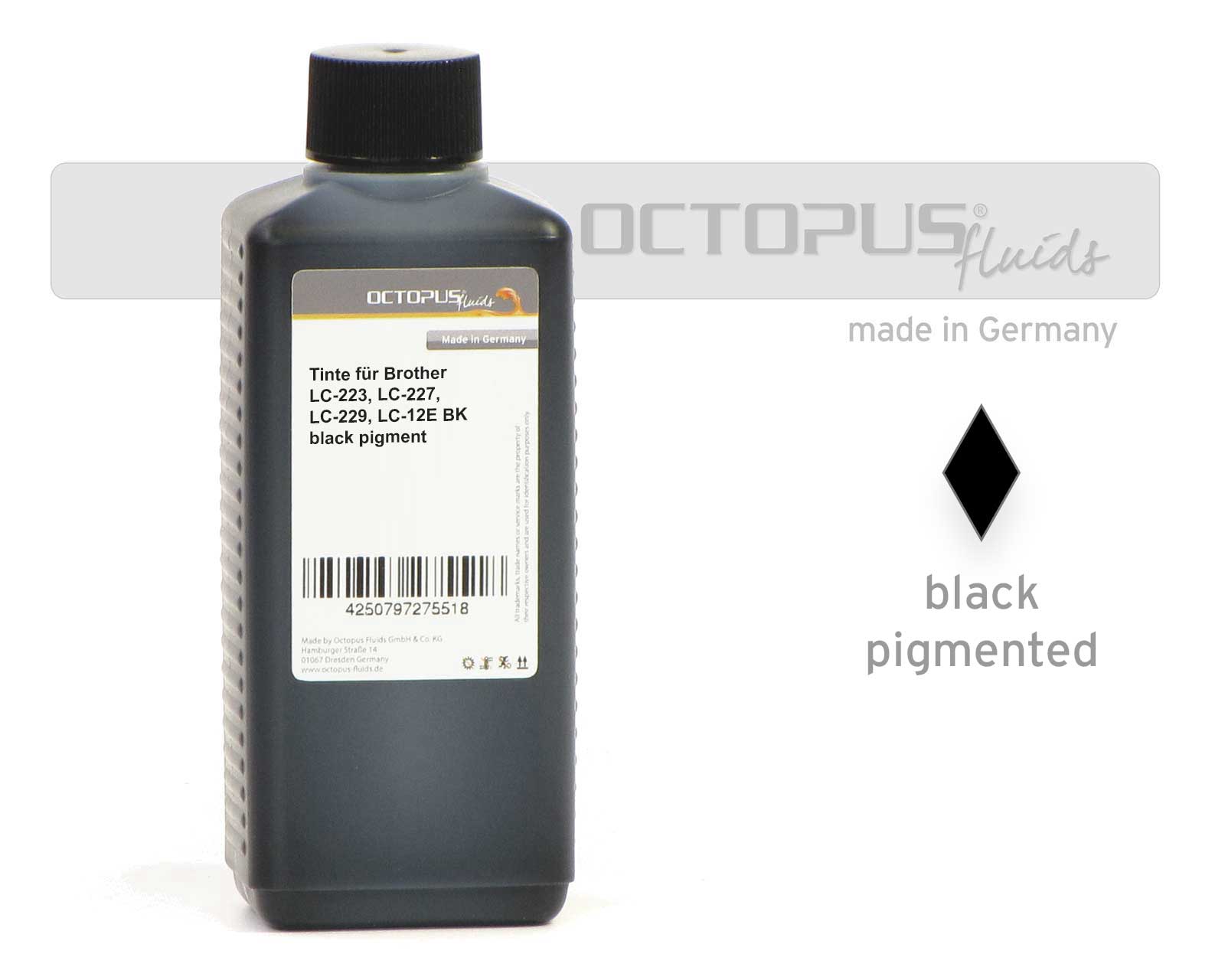 Refill ink comp. with Brother LC-223, LC-227, LC-229, LC-12E black pigmented
Refill ink comp. with Brother LC-223, LC-227, LC-229, LC-12E black pigmented
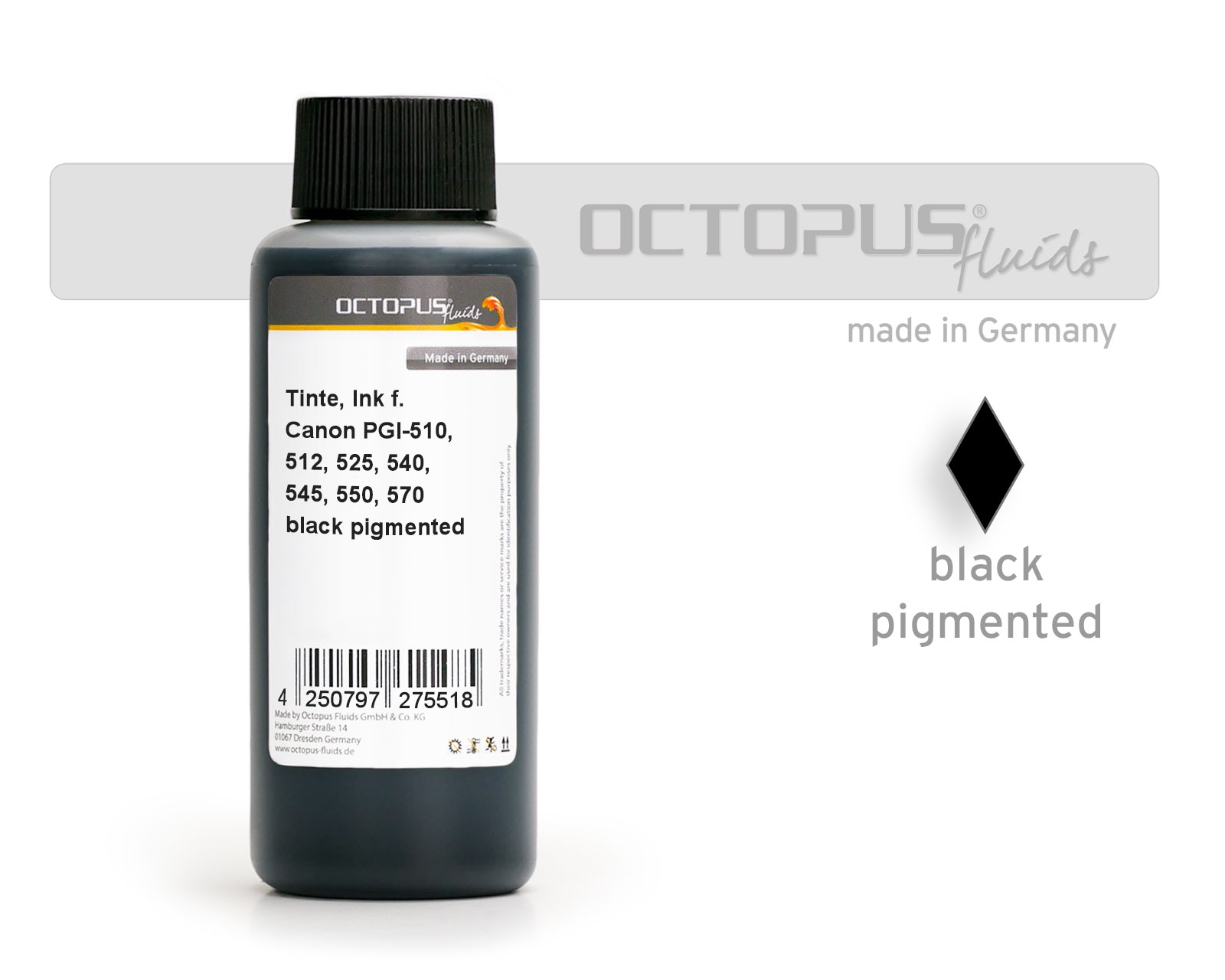 Ink for Canon PGI-525, 550, 555, 570, PG-540, 545, 510, 512 pigm. black
Ink for Canon PGI-525, 550, 555, 570, PG-540, 545, 510, 512 pigm. black
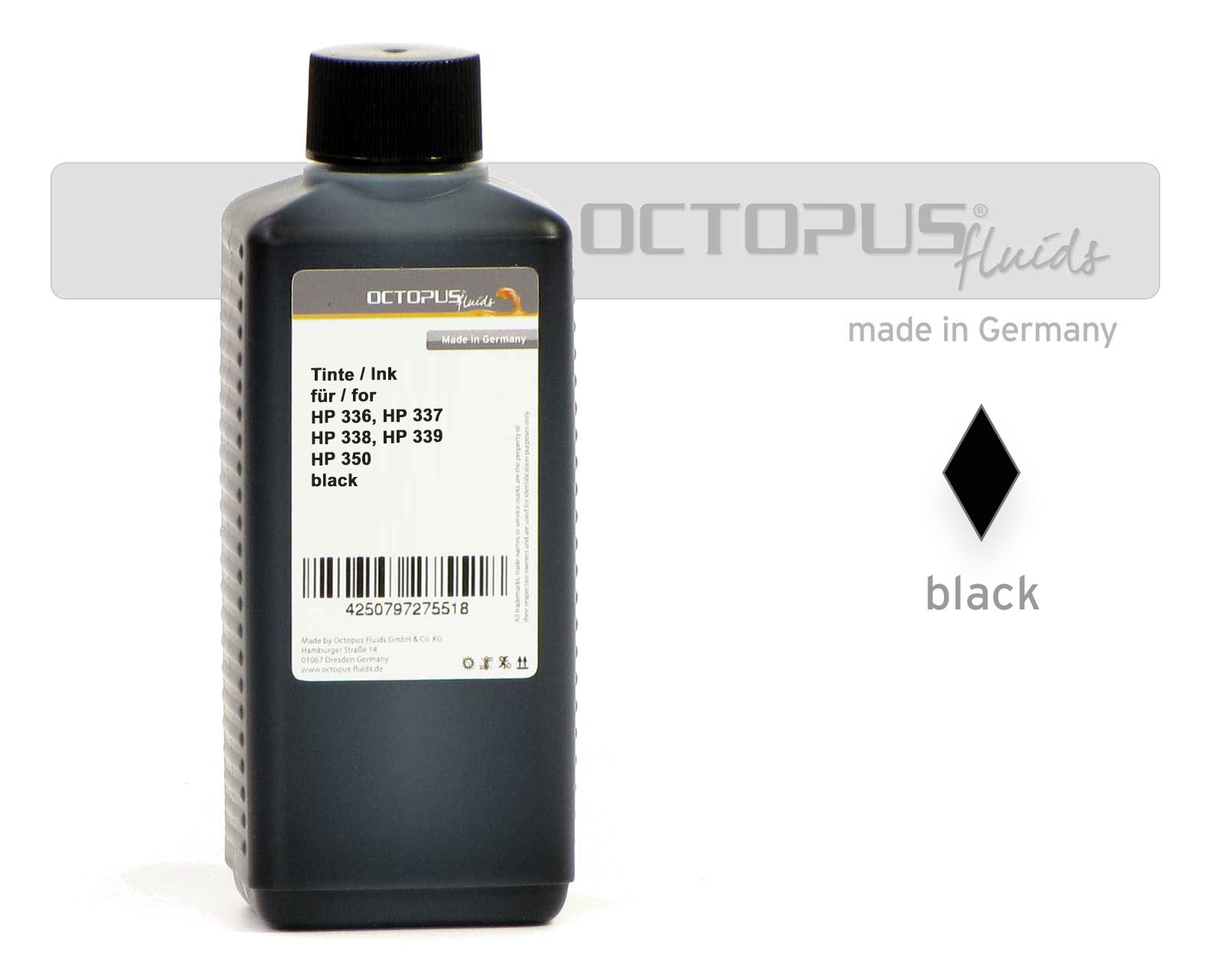 Refill ink compatible for HP 336, 337, 338, 339, 350, 350 XL pigmented black
Refill ink compatible for HP 336, 337, 338, 339, 350, 350 XL pigmented black







